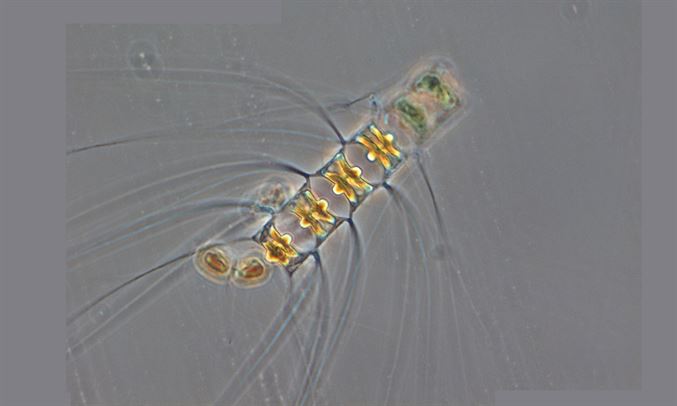The colonies typically consist of straight, often long filaments. In a girdle view, the individual cells appear rectangular with raised corners. Valves, which are essential components of diatom cell walls, exhibit a central protuberance and have a low mantle. The foramina, tiny openings within the diatom cell walls, come in a panduriform shape, being either wide or narrow, often featuring a central constriction. Both the intercalary and terminal setae, hair-like structures, are similar in appearance, being long, coarse, straight, with a short basal portion. Each cell contains two chloroplasts.When viewed under scanning electron microscopy (SEM), the valves take on an elliptical shape and are perforated with small pores. Long, branched capilli structures are located at the edge of the valve and at the base of the setae. The rimoportula, a tube-like structure, is centrally positioned and encircled by small spines. The setae have a four-sided cross-section, with pores and spines.Resting spores in this context are smooth, appearing in pairs, held together by short, thick, and curved setae. The primary valves of these spores may display one or two undulations or feature a central high protuberance, while the secondary valves are concave.
